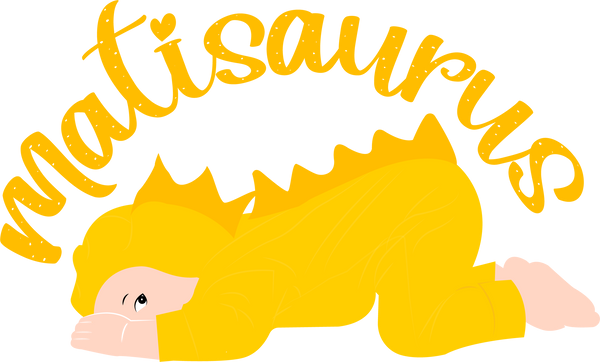Are Organic Baby Clothes Actually Safer?
•Posted on November 11 2019

This is the million dollar question. Does dressing your baby in all organic clothing actually make him healthier and prevent illness. There’s quite a bit of controversy, but let’s address some of the underlying issues together.
How It’s Made

The fact of the matter is that certified organic clothing brands like Matisaurus, and the brands they sell, like Le Petit Prince, Finn+Emma, turtledove London, cat & dogma, little green radicals, & Nadadelazos are made from textiles that are grown and handled without pesticides and other harmful chemicals.
That means you’re dressing your baby in the softest, most natural fabric you can, while being a friend of the environment, too.
The truth is, most of the pesticides and other chemicals used to make traditional clothing are actually washed out before you get your hands on them, so it’s not likely that your baby will experience any ill effects of those chemicals.
However, it’s always recommended that you wash your child’s clothing before they wear it, and while putting a regular cotton t-shirt on your baby may not cause any harm, you never really know.
Not to mention the fact that while all of those chemicals are washed out of the clothing, that doesn’t mean they’re not still coming in contact with you in some way. Producing clothing with all of those chemicals only ensures that those chemicals are being recycled back into our environment.
Other Chemicals Used

Not only are pesticides used in growing the textiles that make regular clothing, but there are other toxins used to dye and treat the clothing after it’s been made. These chemicals provide stain, fade, wrinkle, and static cling resistance to the materials.
If you didn’t already know, that “new” smell of your clothing indicates the presence of chemicals. If that smell doesn’t fade after a few washings, the chemicals are likely still there. Here are just some of the toxins used in conventional materials:
- This is a dye or synthetic colorant that releases carcinogenic amines. All of these types of dyes are detrimental to the environment, and some of them have been identified as human bladder carcinogens.
- This carcinogen is unregulated in the United States. It’s used to prevent wrinkles in clothing. A lot of non-organic baby clothing brands use as much as 18,000 parts per million in their clothing, despite the fact that only 20 parts per million has been shown safe. Short term exposure to formaldehyde causes allergic dermatitis, while long term exposure can be even more harmful.
- This group of chemicals, called PFCs, repels water and staines. However, they break down into a toxin called PFOA. This type of chemical is also found in household cleaners, cosmetics, food containers, furniture, popcorn, nonstick pans, and paper plates.
- Nonylphenol ethoxylates. This is a chemical used in dyes and prints. It’s a hormone disruptor in the body.
Ensuring Organic Clothing Doesn’t Contain Chemicals

Until recently, it was legal for organic clothing manufacturers to include these types of chemicals in their clothing. As long as the textiles were grown organically, chemicals could be used to dye the clothing after it was produced.
Starting in 2011, in order for a textile to be considered organic, it had to have a certification from a third party, ensuring that it was grown and produced using organic processes.
If you are concerned about the organic nature of the clothing your child is wearing, be sure you look for third party certifications that ensure the garment has been grown and produced using environmentally friendly organic processes.
Matisaurus sells organic clothing produced by a variety of organic clothing manufacturers and is proud to offer certified organic clothing for your baby.
More Posts
-
How To Buy Clothes ...
When you’re planning for the arrival of your new baby boy, the list of things to do is endless and often confusing! Even choosing the right clothes...
Read More -
How Parents Can Soo...
New parents know how challenging it can be to care for babies’ sensitive skin. While you should always consult your pediatrician if your baby is su...
Read More -
Choosing the Perfec...
It's such fun shopping for baby gifts for that special little someone in your circle of friends and family. There are so many cute outfits, blanket...
Read More



